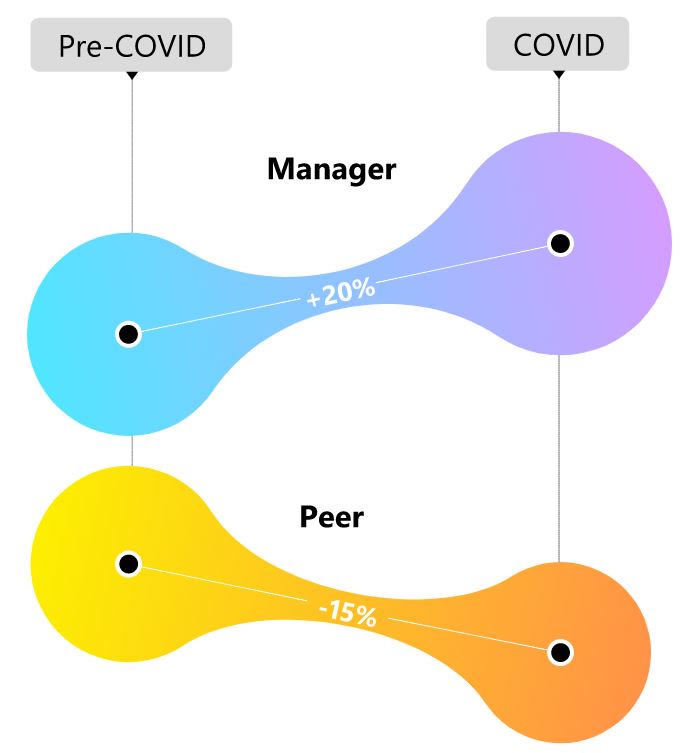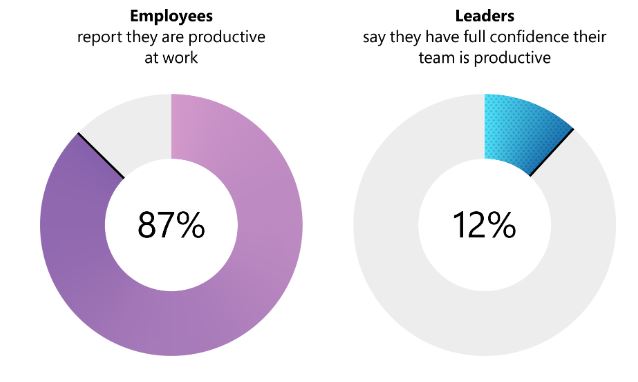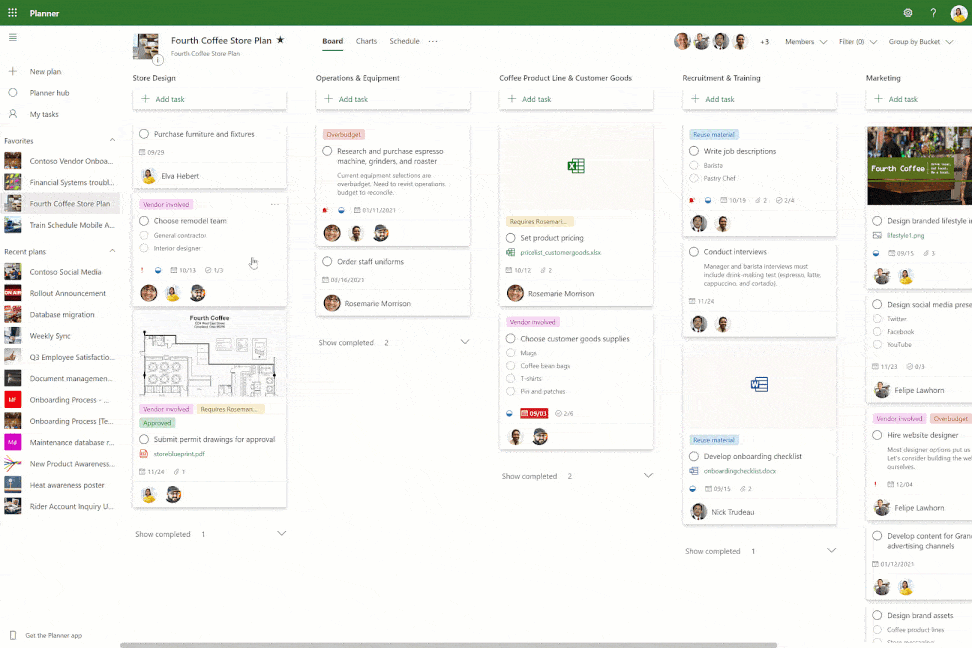The importance of trust is emphasized in today’s hybrid work, which has brought new challenges to distributed remote teams.
The way we work and interact with team members and supervisors has changed radically with the spread of hybrid work.
Hybrid work, the mix of working in an office and remote or distributed work, has greatly increased the importance of trust, as trust between team members is essential for successful remote and distributed teams.
Trust plays a very important role so that people can, among other things:
- know how to act
- be able to work with each other
- feel safe to take risks, collaborate, and innovate
- dare to share their thoughts and ideas with each other
- can develop meaningful relationships and shared experiences.
The building of trust usually starts with one’s own team, from where it expands to become part of the work community and the culture of the organization. The importance of trust is also significantwhen it comes to productivity and wellbeing.
The new winds of hybrid working
Remote and hybrid working in recent years have affected people’s own perceptions of work, workplace, and doing work, according to Microsoft’s 2021 Work Trend Index study.
The study, which mapped and analyzed the views of 30,000 employees and billions of productivity and work signals in Microsoft 365 and LinkedIn, highlighted a change in the meaning of trust among colleagues and supervisors.
A significant observation related to trust was that, while in the past employees have primarily trusted their colleagues, i.e., their peers, in the hybrid world the primary source of trust is the closest manager.

The results of the 2021 Work Trend Index suggested that team bonding, work-life balance, and feelings of engagement and enthusiasm for work are difficult to maintain in a more digital world, especially for new hires.
The results of the study highlighted the importance of trust and flexibility in enabling successful teamwork within the framework of hybrid working.
Hybrid working and the productivity paradox
The results of the 2022 Work Trend Index revealed a new shift in trust: people are working more than ever before, but up to 85% of managers say the shift to hybrid work has made it challenging to trust that employees will be productive.
Only 12% of managers trust their teams to be productive, while 87% of employees say they are doing productive work.

At least working time is spent more in meetings, as the time spent by the average Teams user in meetings increased by up to 252% during 2021, according to Microsoft’s research.
Also, the supervisors of the hybrid era talk about the difficulties in trusting their employees to do their best and less visibility into the work of their subordinates. Microsoft calls this kind of phenomenon the productivity paradox.
The challenges of hybrid work
The results of Microsoft’s research show the importance of trust and the challenges that hybrid work has brought to the everyday life of many information workers. These include, among others:
1. Communication and interaction
- If remote workers cannot be present in face-to-face meetings, building trust and relationships with other team members can be difficult.
2. Disconnection between team members
- Hybrid teams often lack team building opportunities, which can lead to disconnection between remote and office workers and feelings of isolation and exclusion.
3. Unclear expectations about work goals between supervisor and subordinate
- It can be difficult to set clear goals and expectations when working remotely.
4. Lack of visibility into employees’ work input
- Supervisors and management are not necessarily up-to-date on how subordinates and employees progress the achievement of goals with their own work.
Solutions to challenges
The above-mentioned challenges should be solved systematically if they or other challenges related to hybrid working have been identified in the organization.
1. Transparency of operations
One of the components of trust is transparency in the work of employees and management, as well as in information management throughout the entire organization.
In this case, for example, the availability of key figures and high-quality information and their transparent review in the right place at the right time is important so that productivity can be promoted, and virtual working is possible.
2. Systematization for own and team’s work
According to Microsoft’s research, several supervisors succeeded in introducing their subordinates doing remote and hybrid work and strengthened their experiences of being part of a team. This was achieved by taking care of basic things, such as setting clear goals, prioritizing work, productivity, work-life balance, supportive team culture, and meaningful work.
- Setting clear and achievable goals
- Clarification of priorities
- What are the key tasks for each employee that must be completed by the deadline?
- Using tools to organize work at individual and team level
- For example, using Microsoft Planner for managing team and individual tasks
- Centralizing the commenting of documents and certain jobs to their own teams and channels in Teams
- Regular team meetings to monitor work progress
- For example, a weekly meeting on Mondays to review upcoming work

In addition, self-management and time management are key for every employee. If you don’t plan your working day, you run the risk of drifting off to do certain things that are not necessarily the most important ones in your priorities.
- Planning the working day
- Separation of important priority work and urgent work, for instance, by means of ABC classification
- Booking uninterrupted working time in the calendar
- Using Do Not Disturb mode in Teams
- Taking breaks of 5–10 minutes between meetings
- This habit helps the brain to “reset” and reduces stress.
3. Managed communication between team members
The sense of togetherness among team members can be strengthened, for example, with regular virtual coffee breaks. A separate channel or discussion window on Teams also works well, where team members can post topical issues outside of work.
Marko Koskela
Chief Commercial Officer, Partner








